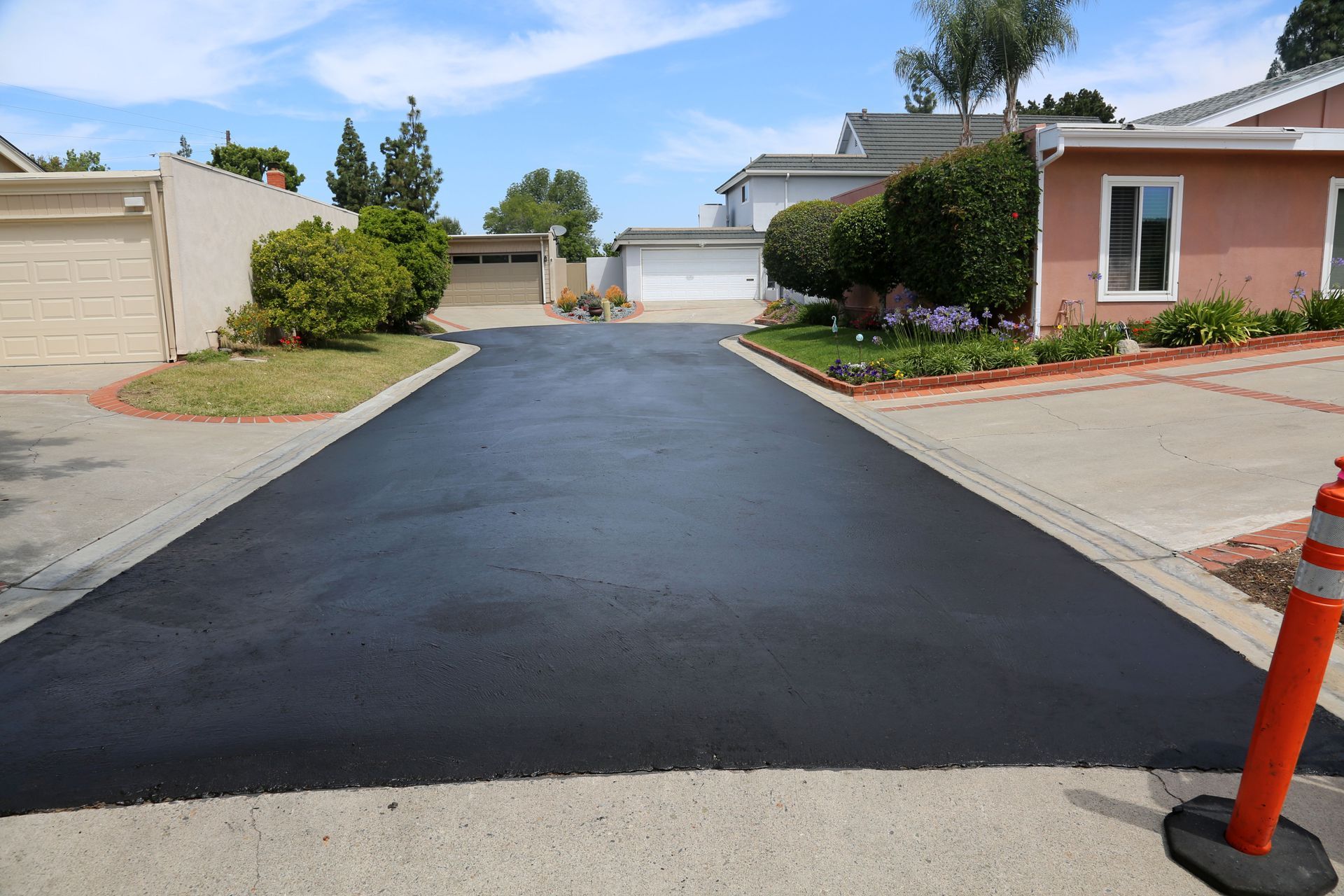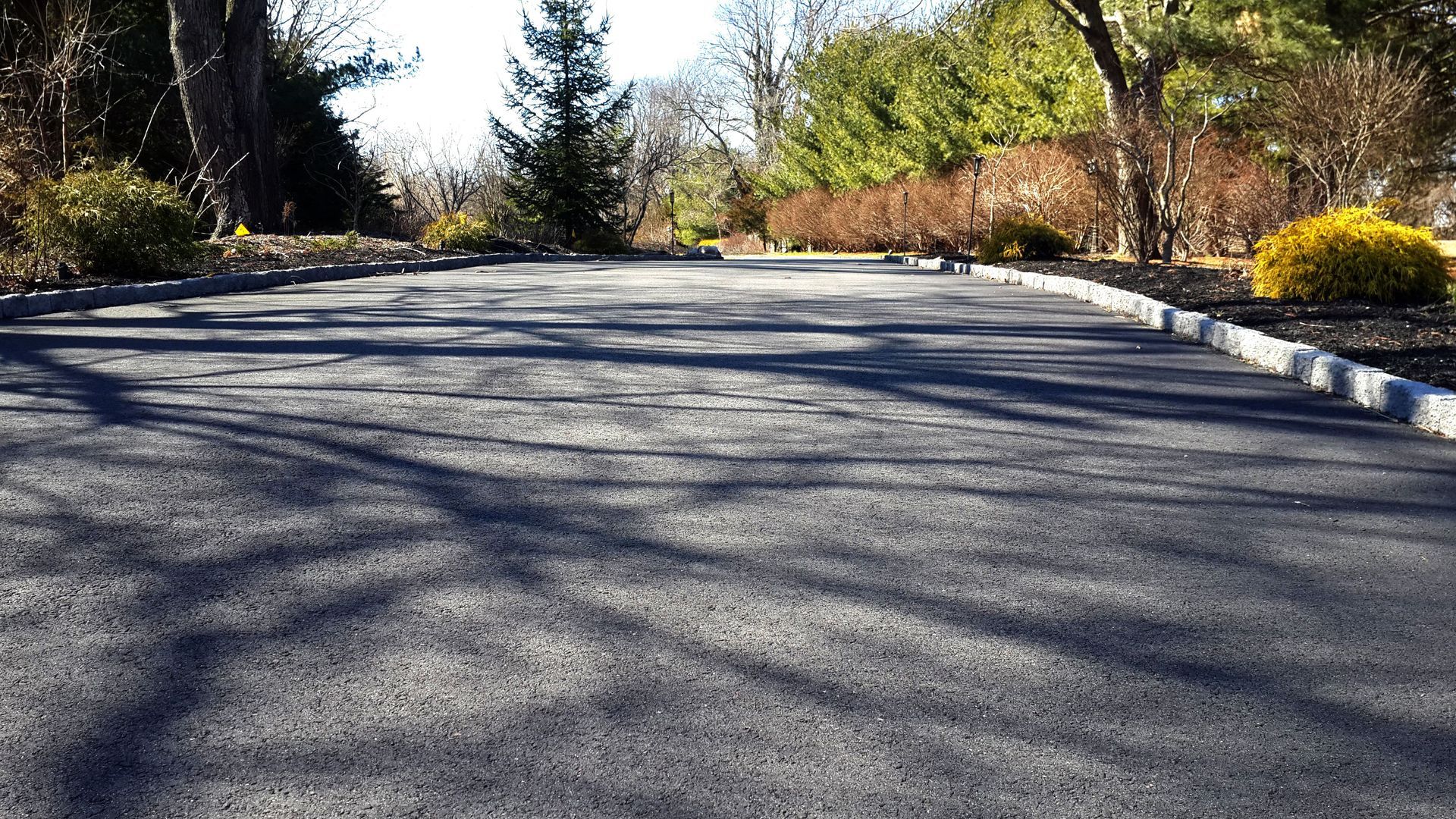August 28, 2025
Asphalt is a versatile construction material composed of aggregates, binder, and filler. The binder, typically bitumen, ensures cohesiveness and durability across diverse applications, including roads, parking lots, and airports. Its adaptability to temperature fluctuations makes it a reliable choice for various geographic regions. Familiarity with asphalt properties empowers construction professionals to select the best material for long-lasting pavement solutions.
The aggregates in asphalt, such as crushed stone, sand, and gravel, provide structural strength, while bitumen binds the materials together for durability. Fillers, added in smaller amounts, enhance density and water resistance. These components are mixed in precise ratios to create asphalt paving suitable for different applications, ensuring performance and longevity.
Asphalt mixes vary based on environmental and load-bearing requirements. Hot Mix Asphalt (HMA) is known for its strength under heavy traffic, Warm Mix Asphalt (WMA) reduces energy use and emissions, and Cold Mix Asphalt suits temporary or low-traffic areas. Understanding these distinctions allows stakeholders to choose the appropriate asphalt paving solution for each project.
Properties like flexibility, durability, and temperature tolerance define the performance of asphalt mixes. Rigid mixes are ideal for high-stress areas, while more flexible options handle temperature shifts effectively. Selecting the right mix based on expected performance and environmental conditions extends pavement life and reduces maintenance needs.
Environmental considerations are increasingly critical in asphalt paving decisions. Incorporating recycled materials such as reclaimed asphalt pavement (RAP) lowers carbon footprints, and WMA production reduces greenhouse gas emissions. Sustainable practices in asphalt paving balance environmental responsibility with structural performance.
Determining the Right Asphalt Thickness
Choosing the correct asphalt thickness is crucial to ensure longevity and functionality. Factors like traffic load, climate, and subgrade condition determine the required thickness. Different commercial uses, from parking lots to industrial roads, necessitate tailored thickness to handle specific stress levels. Inadequate thickness can lead to premature wear and costly repairs.
Traffic analysis informs thickness decisions. High-traffic or heavy vehicle areas require thicker asphalt paving to prevent deformation, while low-traffic zones can use thinner layers efficiently. As commercial transport demands evolve, regularly evaluating traffic patterns ensures proper pavement support.
Climate directly impacts asphalt thickness requirements. In regions with temperature extremes, thicker layers accommodate expansion and contraction, reducing cracking. Cold climates may need enhanced material strength to counter freeze-thaw cycles. Understanding local climate patterns guides optimal thickness selection, protecting pavement integrity.
Subgrade preparation influences required asphalt thickness. A well-compacted, stable subgrade allows for thinner asphalt layers, while poor subgrade conditions require additional thickness to support load stress. Proper evaluation and preparation of subgrade materials prevent long-term pavement issues.
Thickness selection also affects project costs. Thicker asphalt increases initial investment but can save on repairs, while thinner layers reduce upfront costs but may lead to frequent maintenance. According to Global Information, the asphalt pavers market is projected to grow to USD 3.22 billion by 2030 over the next five years, illustrating rising investment in optimal pavement solutions. Balancing cost with durability ensures effective asphalt paving outcomes.
Choosing the Appropriate Mix for Commercial Use
Commercial asphalt paving requires mixes tailored to traffic and operational demands. HMA offers durability for high-traffic zones, WMA supports energy efficiency and reduced emissions, and specialized blends meet noise reduction or comfort requirements. Selecting the right mix ensures both functionality and environmental compliance.
Mix performance under load is critical. Heavy-duty areas need asphalt paving that can sustain weight without cracking, incorporating additives to enhance elasticity and fatigue resistance. Proper testing guarantees that pavements can withstand legal load limits while maintaining long-term performance.
Heavy-duty pavements benefit from reinforced or dense-graded mixes. Areas with constant truck or bus traffic need asphalt capable of handling ongoing stress. Polymer-modified or thicker layers prevent rutting and cracking, ensuring reliable operation for industrial, airport, and logistics zones.
Sustainability considerations include using recycled materials like RAP, conserving resources, reducing waste, and lowering environmental impact. Incorporating sustainable practices in asphalt paving supports global goals and demonstrates corporate responsibility while maintaining high performance.
Climatic conditions influence mix selection. Asphalt paving must withstand temperature shifts, precipitation, and freeze-thaw cycles. Choosing the appropriate mix for the local climate prevents weather-related damage and optimizes pavement longevity. Site-specific climate assessment ensures resilient asphalt paving applications.
Installation Best Practices
Pre-installation planning is vital for successful asphalt paving. Evaluating site conditions, resources, and scheduling facilitates efficient execution. Comprehensive planning anticipates challenges, minimizes delays, and supports seamless project completion.
Proper equipment and techniques are essential for quality asphalt paving. Advanced machinery ensures uniform layer application and compaction, while skilled operators maintain precision and efficiency. Continuous improvement in paving technology enhances results, delivering smooth, durable pavements.
Timing and climate considerations impact installation quality. Scheduling work during optimal weather conditions prevents adhesion issues and deformation. Seasonal variations influence project timelines, and adapting to climate ensures asphalt paving achieves expected durability and performance.
Post-installation procedures maintain pavement integrity. Actions like sealant application, level verification, and defect inspections extend lifespan. Regular monitoring allows early intervention to prevent significant repairs, ensuring long-term functionality and safety for commercial asphalt paving.
Avoiding common mistakes is key. Errors such as poor mixing, inadequate compaction, or insufficient surface preparation compromise pavement quality. Adhering to best practices, monitoring procedures, and prioritizing craftsmanship prevents costly rework and preserves investment value.
Maintenance and Longevity
Routine maintenance prolongs asphalt paving life. Cleaning, crack sealing, and minor repairs prevent water infiltration and deterioration. Scheduled upkeep addresses seasonal wear, enhancing safety and reducing costly reconstruction.
Early identification and repair of pavement damage is critical. Detecting potholes, cracks, or surface wear promptly allows effective interventions, restoring strength and appearance. Techniques like infrared patching minimize disruption while maintaining asphalt paving performance.
Sealcoating enhances durability and aesthetics. Periodic application protects against UV rays, oxidation, and chemical spills. Sealcoating delays major repairs and preserves asphalt compaction, supporting a long-lasting, visually appealing pavement surface.
Weather affects asphalt longevity significantly. Temperature swings, freeze-thaw cycles, and precipitation challenge pavement structure. Proactive measures such as crack sealing and surface treatments mitigate damage.
Cost analysis of maintenance strategies ensures optimal resource allocation. Evaluating life-cycle costs compares routine upkeep with potential reconstruction expenses. Evidence shows proactive care reduces major overhauls, lowering total ownership costs while preserving visual and functional quality of asphalt paving.
Hiring the Right Contractor
Selecting a qualified contractor is essential for successful asphalt paving. Licensed, insured, and experienced professionals meet industry standards and deliver reliable outcomes. Certifications and reputation assessments provide confidence in contractor capabilities.
Assessing past projects demonstrates experience. Reviewing completed asphalt paving projects confirms the contractor’s ability to handle similar work, with client testimonials and site visits supporting decision-making. Experience ensures quality results and mitigates execution risks.
Understanding contract terms safeguards project interests. Clear responsibilities, timelines, and deliverables prevent misunderstandings and disputes. Collaboration with legal advisors ensures contracts protect all parties while promoting constructive engagement.
Quality assurance and warranties provide additional protection. Reputable contractors follow strict standards, with inspections and testing ensuring precision. Warranties cover potential defects, offering security and ensuring long-term satisfaction with asphalt paving projects.
Evaluating bids balances cost and quality. Competitive proposals support fair pricing, while lowball offers may compromise standards. Reviewing itemized estimates, including labor and materials, allows informed decisions that align with project goals and financial considerations, delivering successful asphalt paving outcomes.
By considering asphalt mix, thickness, environmental factors, installation best practices, maintenance strategies, and contractor qualifications, commercial property owners can achieve durable and cost-effective pavements. Professional oversight and adherence to best practices ensure optimized performance, extended lifespan, and environmental responsibility in asphalt paving projects. Contact Gulf Pride Paving and Civil Contractors for a quality paving provider that ensures every project contributes to the community’s development and sustainability.







